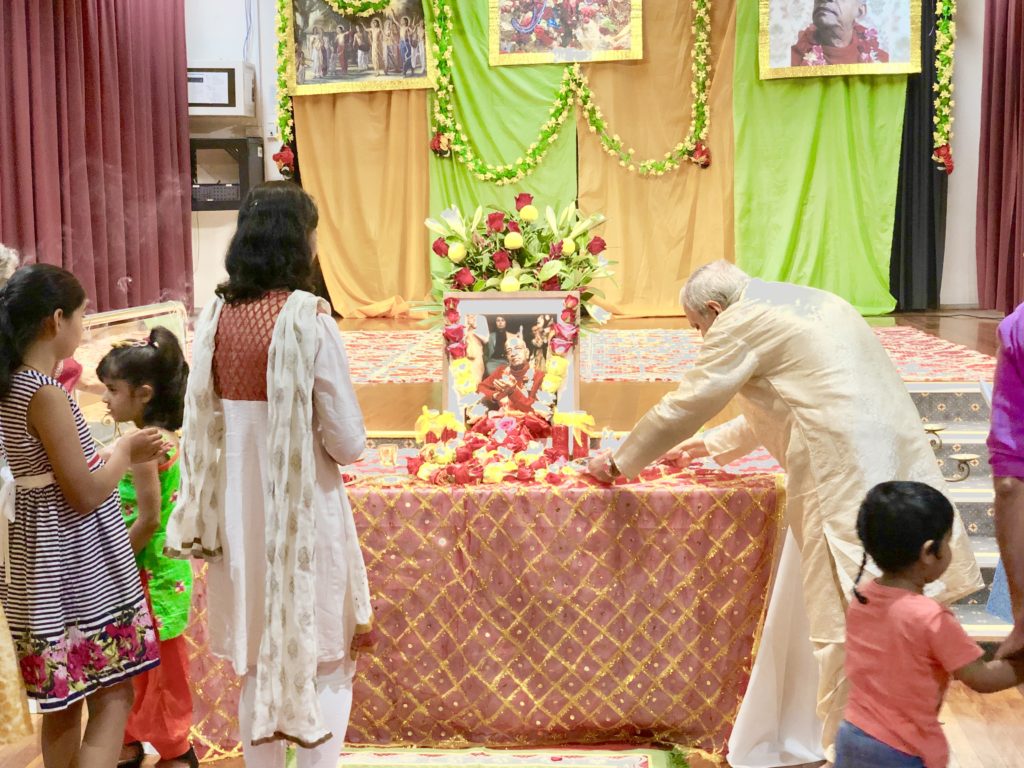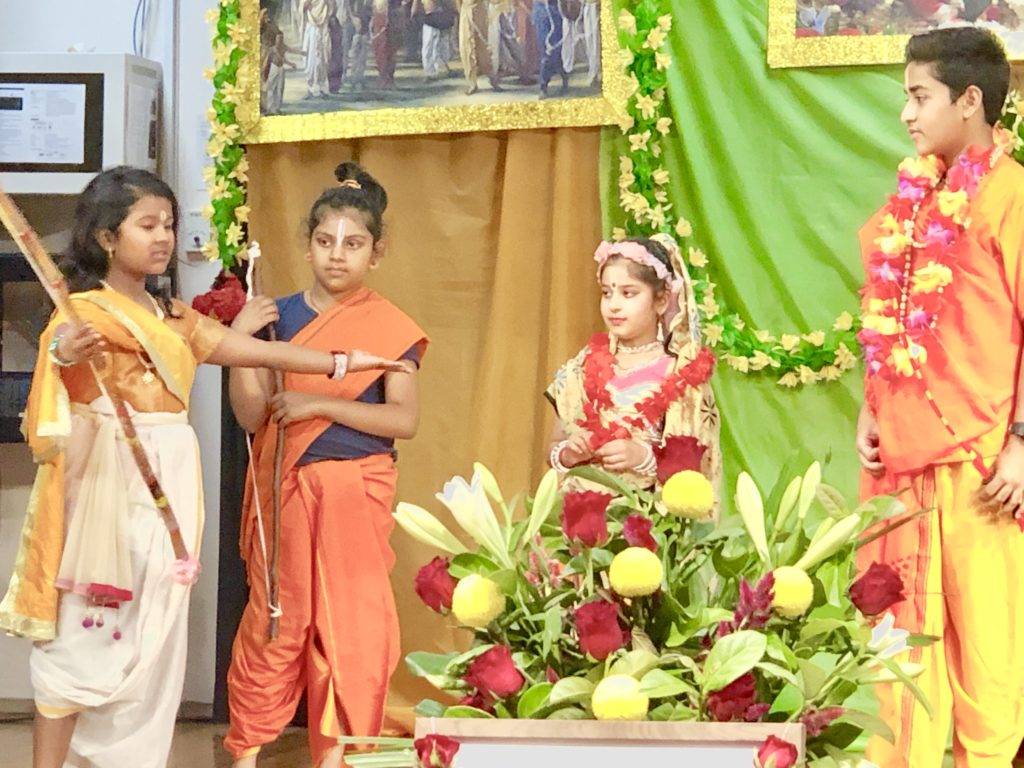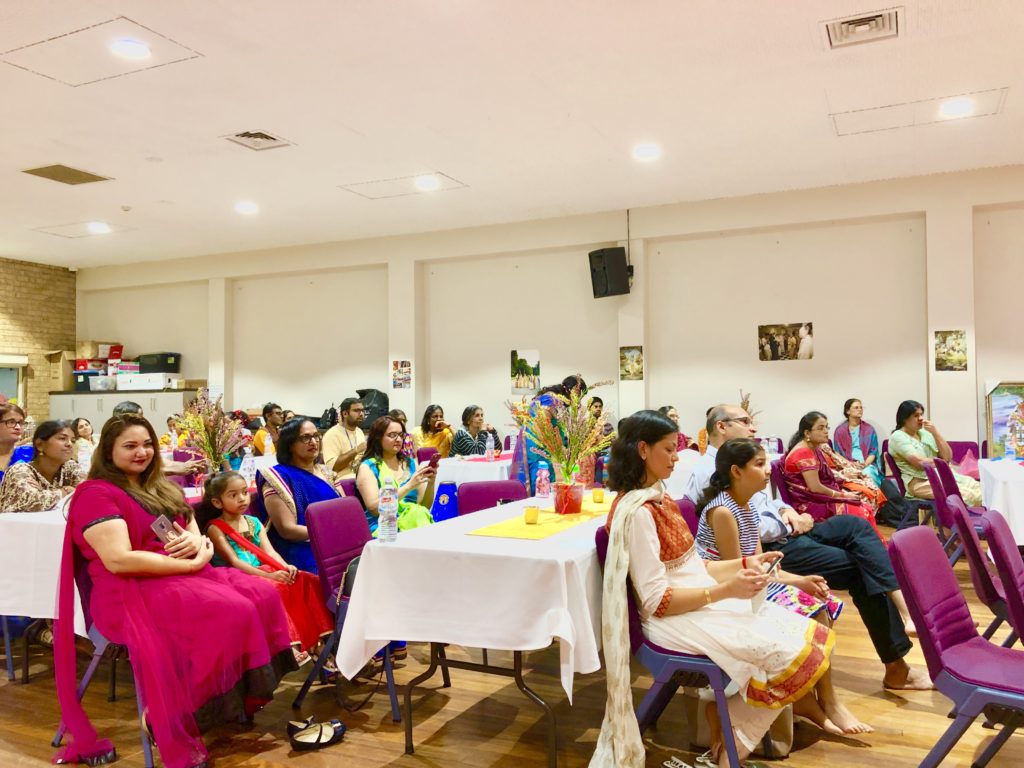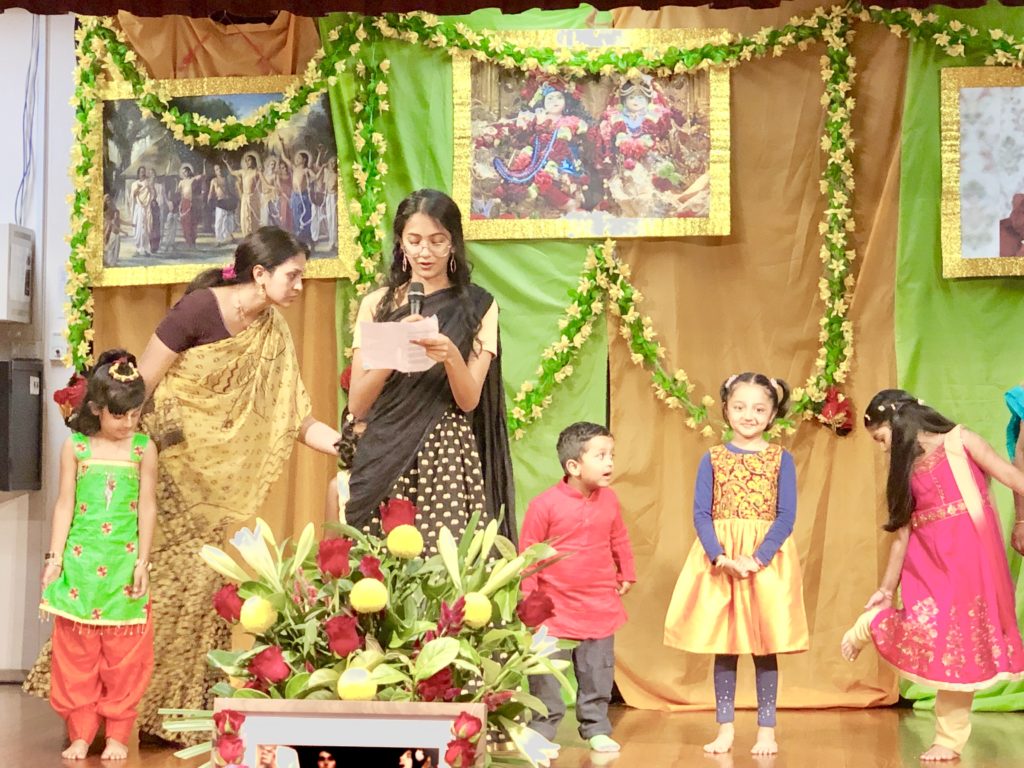Dhritarastra speaks these first words of the Bhagavad-gita, and while speaking this, it is significant that the first content of the Gita is dharma. As will be later revealed, the Bhagavad-gita is a book about dharma. It is primarily a question about the right course of action. The specific question that Arjuna asks is, “prichami tvam dharma samudha cetaha, I ask you about dharma because my consciousness is bewildered at this stage. Please guide me.” Prior to using this words Krishna, Arjuna has used the word dharma repeatedly in the first chapter of the Bhagavat-gita. He has talked about Kula dharma, and how that has to be protected. The word dharma will come repeatedly in Gita, and if we consider the Gita as a part of the Mahabharat, then the Mahabharat is also a search for Dharma. It is trying to explain what is dharma and how one can know what is dharma. In the Mahabharat, even the demons did not want to openly violate dharma at least initially, because they know that dharma has power, and they want to use that power for their own purposes.
Let’s look at some of the meanings of the word dharma which will be relevant over here for us. One meaning could be that: we normally translate dharma as religion which is actually an over-simplification of the point of distortion. That is because the word religion has acquired certain connotations in terms of certain rules given by someone, but that’s not all that this is about. The Bhagavatam uses the word dharma, and there are multiple understandings to it. But definitely it is not the understanding that it is just some religion that some people are following. At a fundamental level dharma comes from the root “dhri”, which means to sustain. So, “dharma” is that which “sustains” or “maintains, or that which enables things to be what they are, and ensures that things stay in their position. This would imply that when we discuss dharma – If at all it can be translated, we could call it as a “sacred law” or the “innate order” of things. So, dhrama is the innate order of things within the universe which human beings are meant to harmonize with, and also it is the innate order in the universe which society and government has to harmonize with through its laws and customs. It is also the innate harmony of our own beings by which we can be who we are or who we are meant to be. Thus, we can be who we essentially are. Such harmony is what we are all seeking in this world, and we need to try our best to achieve it, because ultimately – many people for example, nowadays, in the age of individualism, say, “Be who you are. Don’t try to imitate others, don’t force yourselves to become like something else. Don’t become a xerox copy of someone else.” Sometimes such individualism can become obnoxious and Narcism, and it can become self-obsessive, self-destructive and socially destructive. But that is not what we are talking about. The Bhagavad-gita is a work of poetry. As the very name suggests, it is addressed as Gita or song, and as a song it has its poetic features. So, among its many poetic features, is the feature of it having significant ways of stating things. The fact that the first word used in the Bhagavad-gita is dharma is very significant about what its content is going to be. Of course, dharma is a part of the compound dharma-ksetra. In that sense, it is referring specifically to Dhritarastra’s concerned whether this war which is happening on the dharma-ksetra, Kuruksetra, will affect the dharmic party (the Pandavas) positively, and if it will affect his side negatively. But beyond such concerns which are contextual, lets herein focus on the universal theme of the Gita, and that universal theme is that everyone of us needs to harmonize with our essential core. And that subject of harmony with ourselves, the world, the nature of reality, and with the ultimate reality are the essential issues that the Bhagavad-gita deals with. And we too need to deal with these essential issues. And the best way to engage with such issues is by letting our engagement be stimulated and guided by the Bhagavad-gita’s engagement with these issues.
When we want to explore a subject, there is no need to reinvent the wheel and start everything from the scratch. There are many in the past who have probed the questions that we have probed, and by connecting with them excessively, we can learn so much. And the Bhagavad-gita is not just any random ancient thought. It is a thought of the supreme person. And thus, it has profound significance. As the Bhagavad-gita will unfold, we will see how it takes us through the nuance understandings of dharma, to the supreme understanding of dharma, and then ultimately to the loving harmony with our eternal Lord.
*********************
The post Gita 01.01 The Gita’s first word dharma conveys its essential, universal theme appeared first on The Spiritual Scientist.
 Giriraj Swami read and spoke from Bhagavad-gita 3.10.
Giriraj Swami read and spoke from Bhagavad-gita 3.10.










 A beautiful audio rendition of the Ramayana made professionally by Havi dasa ACBSP (Ilan Chester a celebrated Latin Grammy award Venezuelan musician, singer, songwriter and record producer)
A beautiful audio rendition of the Ramayana made professionally by Havi dasa ACBSP (Ilan Chester a celebrated Latin Grammy award Venezuelan musician, singer, songwriter and record producer)
 On Monday 1st of April Radhanath Swami spoke to a full house on the topic of “Language of the Heart” in Bologna, Italy.
On Monday 1st of April Radhanath Swami spoke to a full house on the topic of “Language of the Heart” in Bologna, Italy.






 His Holiness B.B. Govinda Maharaja speaks about the importance of the TOVP
His Holiness B.B. Govinda Maharaja speaks about the importance of the TOVP 
 Approximately 160 visitors from China, the Philippines, Hong Kong, and Taiwan recently came to Mayapur with His Holiness Giridhari Swami on pilgrimage. They came in two groups – the first group, of about 40 people, visited in late December of 2018, and the second group, of about 120 people, came in late January of 2019.
Approximately 160 visitors from China, the Philippines, Hong Kong, and Taiwan recently came to Mayapur with His Holiness Giridhari Swami on pilgrimage. They came in two groups – the first group, of about 40 people, visited in late December of 2018, and the second group, of about 120 people, came in late January of 2019. 




 Satsvarupa Das Goswami: When Swamiji went to San Francisco in January 1967, leaving behind his disciples in New York, we felt bereft. He told us to carry out all the activities we had done together. We tried, but getting up early in the morning, chanting our rounds, going to the temple by 7:00 A.M. and taking turns giving short lectures was all very difficult without Swamiji. Some of us wrote to him complaining and lamenting. He wrote a letter back addressed to all the New York devotees. He said we should not lament. He told us the great secret: service in separation. He called it vani, or associating with the spiritual master by following his instructions. He said that serving the spiritual master in his direct presence (vapuh) was impermanent and “immaterial.”
Satsvarupa Das Goswami: When Swamiji went to San Francisco in January 1967, leaving behind his disciples in New York, we felt bereft. He told us to carry out all the activities we had done together. We tried, but getting up early in the morning, chanting our rounds, going to the temple by 7:00 A.M. and taking turns giving short lectures was all very difficult without Swamiji. Some of us wrote to him complaining and lamenting. He wrote a letter back addressed to all the New York devotees. He said we should not lament. He told us the great secret: service in separation. He called it vani, or associating with the spiritual master by following his instructions. He said that serving the spiritual master in his direct presence (vapuh) was impermanent and “immaterial.”